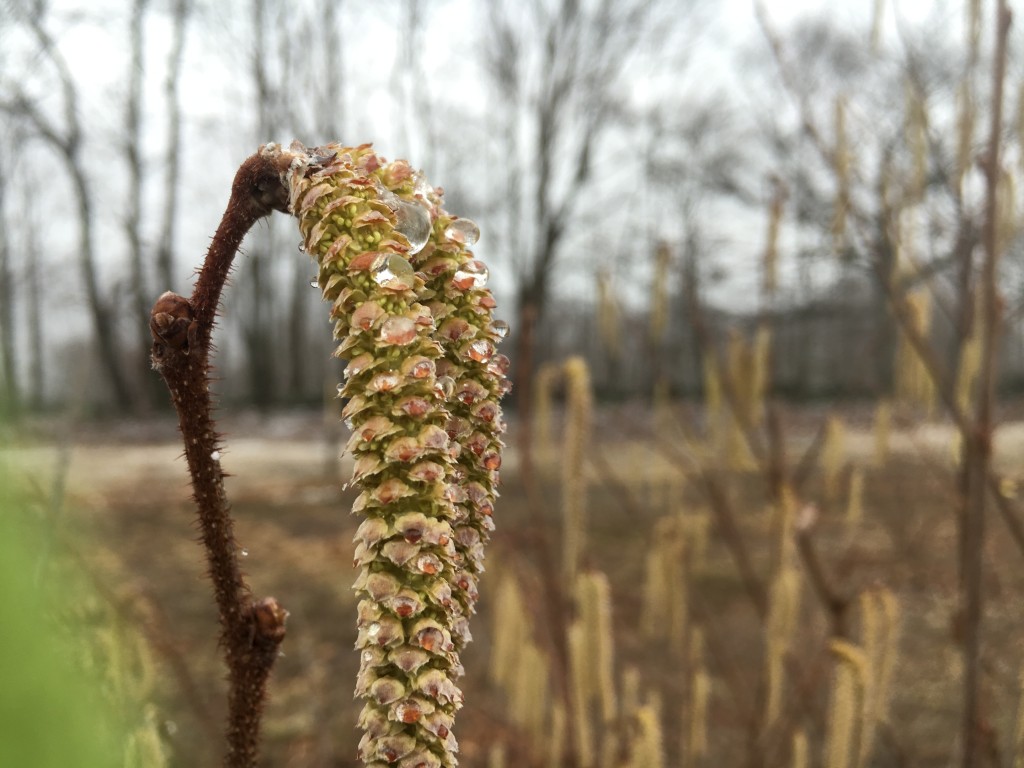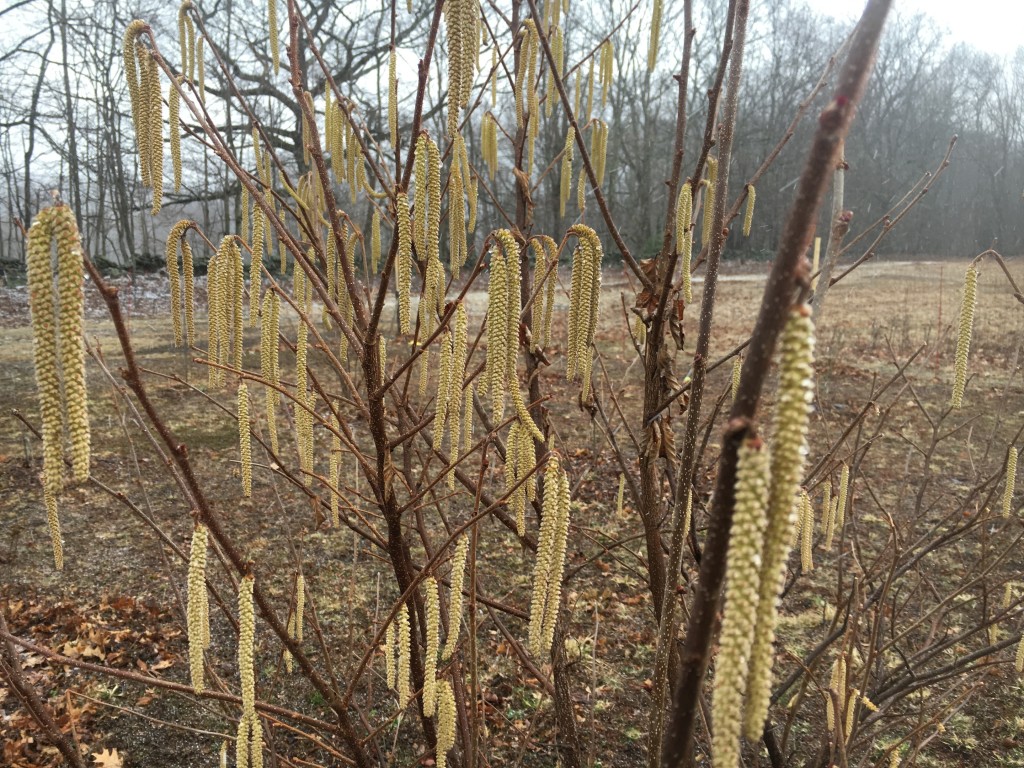Hazelnut bushes in the orchard, planted in 2007, get a chance to properly flourish this spring possibly because they now have a sturdy fence around them. In years past, we’ve only harvested a handful of the nuts that grow in a thick, green, furry casing. The bushes, which can grow into large trees, are self-infertile so it’s necessary to plant at least two together for cross-pollination. The male catkins, pictured above, which produce pollen that they release onto the red female flowers, are a food staple of ruffed grouse throughout the winter. The nuts are a preferred by squirrels, deer, turkey, woodpeckers, pheasants, grouse, quail and jays.
The bushes are drought-tolerant so don’t need constant watering. Hazelnut bushes are vulnerable, in North America, to eastern filbert blight and the leafroller moths.
Commercial growers wait for the nuts to fall off their trees in the Autumn, but if you have any of the above animals lurking, it might be better to harvest as soon as possible.
The trees will start to produce nuts at around 4 years old, but it can take up to ten years before they start to give a full yield and they should keep producing for up to thirty years.

